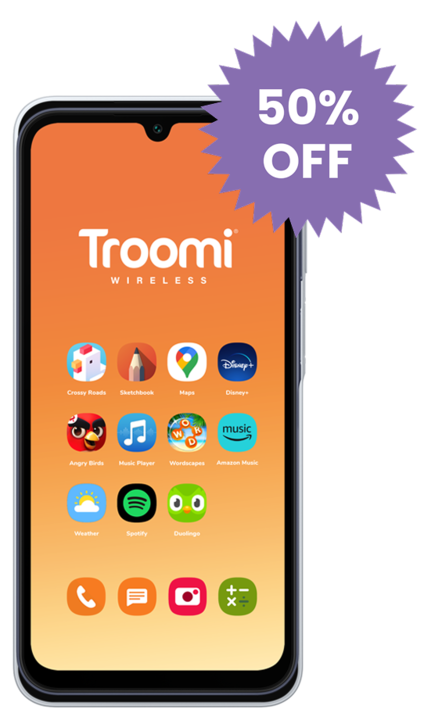Do you remember the early days of Facebook, when your timeline was an actual timeline and you would see most recent posts at the top of your feed? If you do remember, you know that social media has changed drastically since then, thanks to all these platforms adopting algorithms.
If you’re wondering what on earth an algorithm is and how it works, keep reading! We’re about to define “algorithm” for you and explain how it affects your—and your kids’—social media experience.
Social Media Algorithms Explained
Simply put, an algorithm is a way to prioritize content. Most of us are following too many accounts to see everything all of them post, so social media platforms create algorithms to determine which posts to show us first. Each platform’s algorithm is different, and platforms normally don’t reveal how exactly each of their algorithms works.
The truth is that social media platforms want to keep you on their apps and sites as long as possible, because the longer users stay on a platform, the more ad space that platform can sell to companies trying to reach consumers. So they set up algorithms in an effort to show you content you’ll enjoy to keep you scrolling.
But how do they know what content you’ll like? Algorithms will track what types of content you interact with more, through likes or comments, or view for longer periods of time. Is there an account you follow that you like every single post from? Or one where you’ll pause to read the entire caption or watch the entire video? Algorithms on social media take note of this kind of behavior and show you more content from these accounts—and less content from accounts you always scroll right past.
How are Algorithms Used in Social Media?
Though you might not know how algorithms work in social media, algorithms have absolutely changed how we, the audience, experience social media, and it’s the same story for companies and influencers. In the early days of social media, if a person followed a brand account, they would see almost every post that brand shared. Because of algorithms, that’s no longer true, and companies have to work harder to even get their content in front of people who already follow their accounts.
This dynamic has led to companies and influencers chasing the algorithm—trying to figure out what content each platform’s specific algorithm prioritizes and to create more of that. Chasing the algorithm is harder than it might seem because the platforms don’t share how they prioritize content, and their algorithms are constantly changing.
However, it’s safe to say most platforms will serve content that has a lot of interaction to more people, so you may have noticed influencers and brand accounts doing things like including hashtags or asking people to comment on their posts to try to generate more engagement. If something they post gets a lot of engagement, they’re likely to create more of that type of content.
One surefire way to get around the constraints of algorithms is through social media ads—when a brand will pay social platforms to serve their content to a specific group of people. Companies can run ads for products or just try to grow their social media following, and if you’re buying ads, you’re able to choose pretty specific audience groups to receive your content in their feeds. Different platforms have different rules about targeting ads to children and teens, because of the COPPA law, but your children will still be exposed to ads if they’re on social media.
An Unbalanced View
Remember that algorithms on social media will tailor content to what you like, which includes opinions or viewpoints. The more you engage with content you agree with, the less you will see opposing viewpoints or opinions. What’s more, as companies chase the algorithms and try to reach more people, they’ll try to replicate their-most-engaged-with content, which can often be the most polarizing content.
These Algorithms feed you more of what you like while companies try to create more of the content that generates the most conversation. This leads to each of our social media feeds to lean drastically to one side or another on different issues instead of offering a balanced view.
What Your Kids Should Know
So how does this all relate to our kids? Basically, everything that is true on social media for adults is true for kids, and everything that’s important for adults to know is important for kids to know too. That means we should teach our kids about algorithms on social media (in language they’ll understand), and remind them that what they see on social media doesn’t necessarily reflect a balanced view of reality.
As parents, we should also remember that what our kids see on social media is largely out of our control. Even if we know and trust the accounts they follow, they’ll be served ads that may or may not be child-appropriate. The good news is that Troomi is here for you. Troomi phones never include social media apps, which means you never have to worry about your kids running into inappropriate content on their phones. If your child does have social media, you can help them use it in a supervised, safe way on family devices.
Understanding Leads to Safety
As with everything about the internet and technology, the more our kids know, the safer they’ll be. We can have open conversations with them about the realities and risks of social media, how algorithms work in social media, and why it’s important to not rely too heavily on what we see online. If your child is on social media, you can prep them to stay safe by helping them understand social media algorithms and encouraging awareness.


